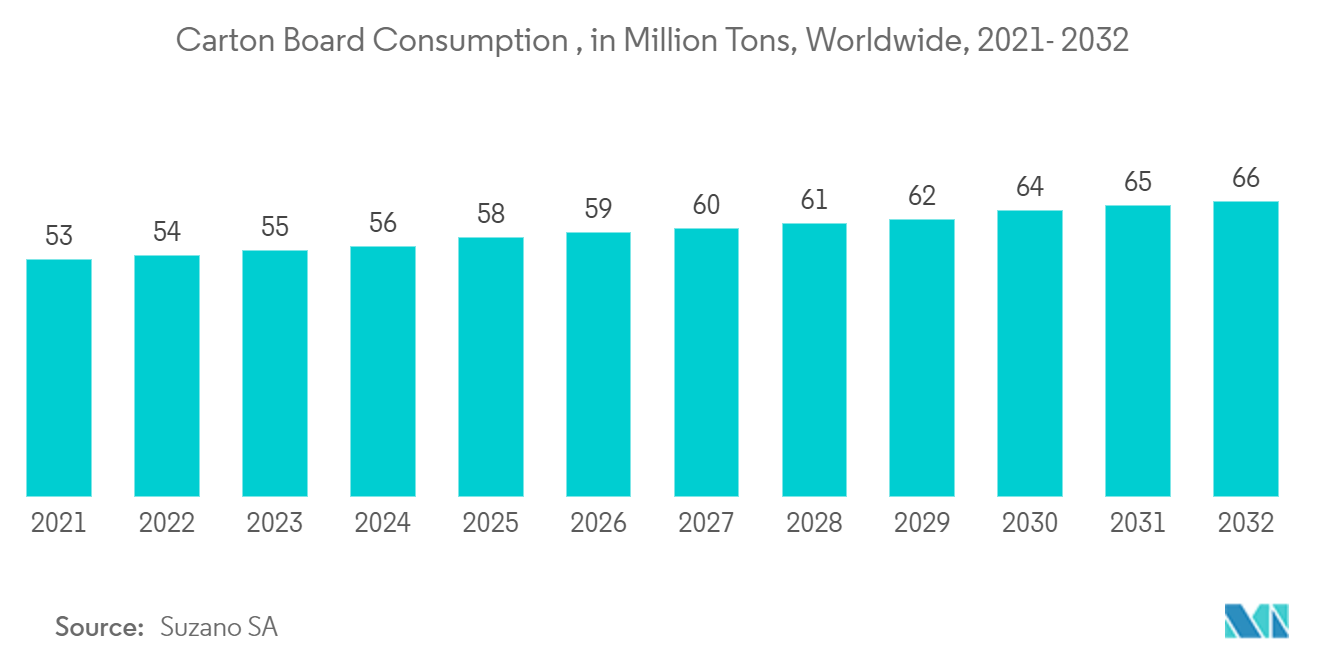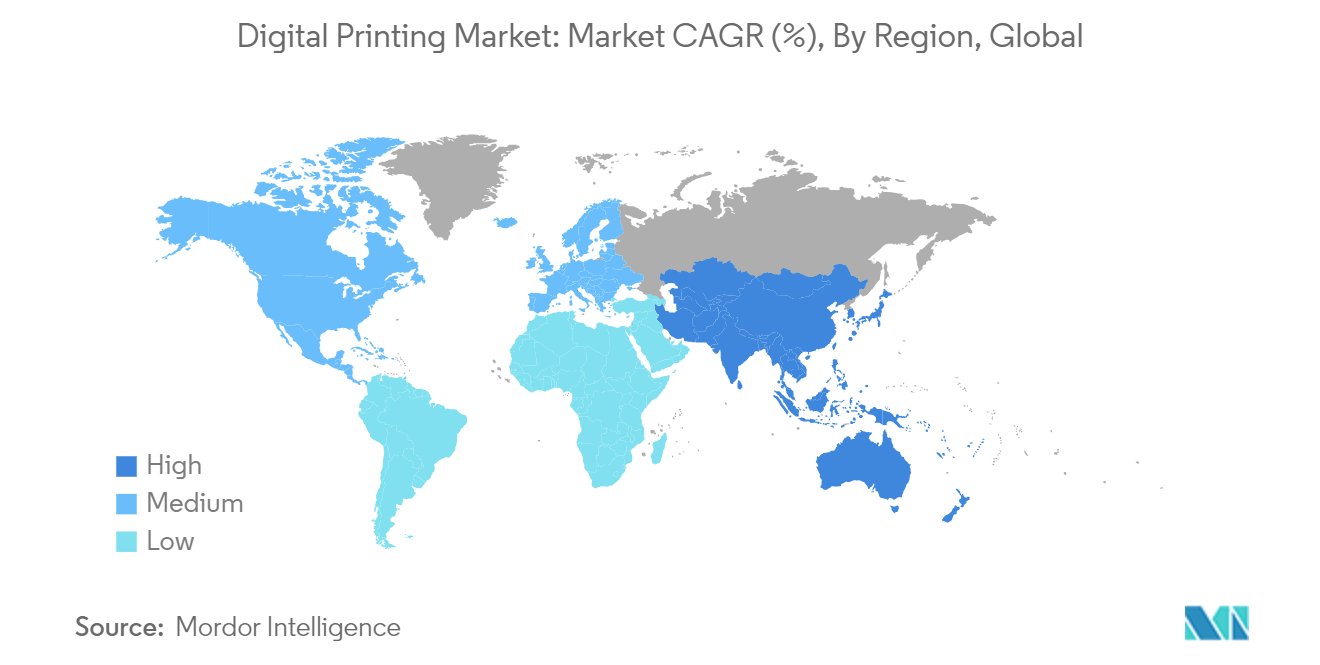Market Trends of Digital Printing Industry
The Packaging Segment is Expected to Witness Significant Growth
- The packaging industry sees vast scope for implementing digital printing. Different packaging methods and technologies to cater to varying product demands for specific types of branding deploy different printing technologies. Some packaging industries include cartons, labels, metal packaging, rigid plastic packaging, corrugated packaging, and flexible packaging.
- Corrugated boxes and display making have been at the forefront of digital in the converting sectors. Digital printing can replace litho or flexo for either pre-print or post-print production, although each requires different configurations. The past decade witnessed the advancement in high-speed single-pass inkjet presses with robust sheet feeders for much higher throughputs than flatbeds could ever manage, which could handle thousands of sheets per hour.
- According to a study by Huhtamaki Oyj, from festive promotion with personalized packaging or premium dry fruit packing launched in multiple product-based designs, innovative digital printing allows a realm of new packaging opportunities in terms of data printing, short-runs, quick turn-around time, and energizing shelf-appeal of flexible packaging. Digital printing is shaping up an essential role in the future of product safety and promotions through flexible packaging.
- Cartons offer many benefits, such as superior printability and flexibility. As secondary packaging, it is widely needed for packaging products in different sectors, such as medicine, consumer goods, cosmetics, and household products. Digital printing systems and embellishment presses can apply specialty coatings to folding cartons, delivering new sources of profitability for commercial printers.
- According to Suzano SA, the consumption of cartonboard in 2021 was 53 million tons and is expected to reach 56 million tons in 2024. Moreover, the demand for cartonboards is predicted to increase further over the next decade, reaching 66 million tons by 2032. Digitally printed packaging products can be created with stunning visual effects, reproducing the gradient and details in original design files. Digital printing will generate the full CMYK spectrum of colors and works on a range of paper materials.

Asia-Pacific is Expected to be the Fastest Growing Market
- The digital printing industry is focused on data-based business models, digital platform solutions, and end-to-end digitized value-creation chains. Over the last decade, enterprises operating in printing-related industries in India have witnessed fierce competition owing to the rise of online media.
- The digital printing industry in emerging countries such as India is on a trajectory of significant growth, with an expanding global market size. Technological advancements, transforming consumer behavior, and developing the packaging industries are pushing the market.
- As small and medium enterprises (SMEs) have grown and customized marketing collateral has surged, a pressing demand arose for a solution that could efficiently and affordably deliver high-quality prints in small quantities. The rise of SMEs and the growing trend of tailored marketing materials have arisen as a solution to address the challenge of producing top-notch prints in small amounts while also ensuring speed and cost-effectiveness.
- Companies operating in the industry are focused on innovating new printing solutions in the market. For instance, in January 2024, Global Graphics Software, a developer of smart software components for print OEMs, extended its strategic business partnership with a Japanese manufacturer of digital inkjet printers. The partnership was initially started in 2016 when the company integrated Global Graphics Software’s Harlequin Core SDK into its RIP software that pushes its printers.
- Further, according to Indian Printer and Publisher, commercial printing increasingly embraces digital printing. Also, the signage industry is considering new technologies such as digital 3D additive printing. Therefore, developing countries, such as India, are among the fastest-growing economies, which would leverage the market for digital printing in various end-user industries across the country.


